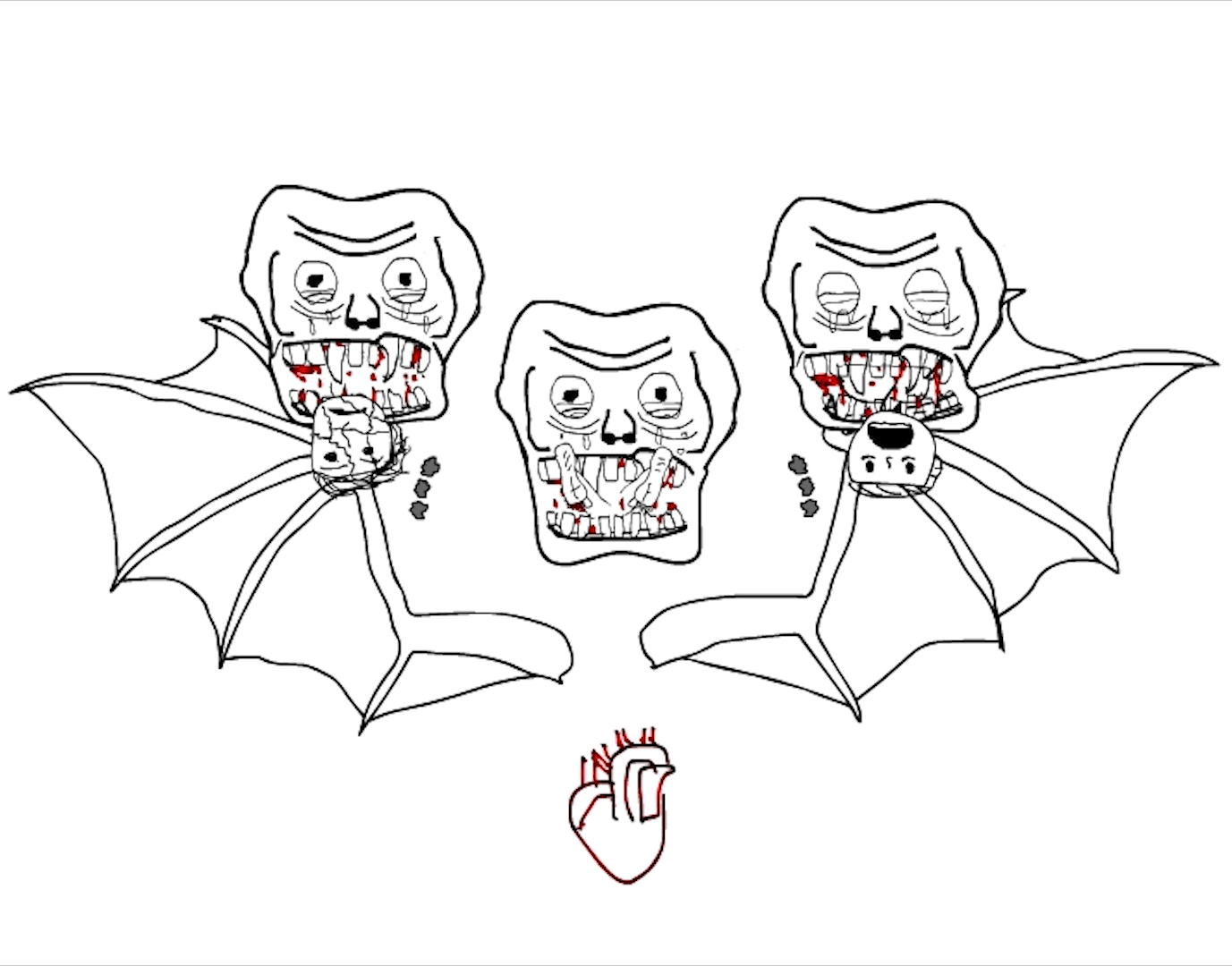CREATIVE PROJECT BY SIDHARTH PRAVEEN (’21)
Dante’s Satan – A Moving Image
Animation
An Interpretation of Inferno
Death, Mourning and Memory in Medieval Literature (YHU3345)
2021
Artist’s Remarks
This moving image depicts Dante’s Satan as he is described in Canto 34. The piece features Satan with three heads, a pair of wings and a beating heart. The head in the middle chews Judas, the one on the left, Brutus, and the one on the right, Cassius.
On the three sinners: Brutus and Cassius’s sins mirror the bolgia of discord in how they betrayed Caesar, thereby causing political turmoil in Rome. Judas’ betrayal of Jesus can also warrant him a place in the third subcircle of the seventh circle reserved for those who were violent against God. As both Caesar and Jesus were foundational in shaping Italy’s culture and public consciousness, Dante ascribes an intense potency to the sins of those who betrayed them; thus they belong with Satan, the ultimate sinner who stood against God. To accentuate the nature of these sins even further, I borrowed the contrapasso elements from the ninth bolgia and the violence-against-God subcircle and weaved them into my animation. Cassius’s head is torn apart and put back together only to be torn apart again. This mirrors the punishment inflicted on Muhammed, Ali, and Bertrand de Born, who have their body parts torn and constantly separated from one another as punishment for sowing discord in the world. Brutus’s body is broken but is not being torn apart like Cassius’s because I wanted to represent the stoicism that he displays in Inferno — Virgil remarks that even though Brutus is writhing, he utters no words. (Inferno 34.66) The almost rigid nature of his body represents his choice to not show his pain. Dante perhaps respected Brutus enough to let his stoicism shine through even though he was being punished. There is smoke coming out of Satan’s mouth containing Judas. This is because Judas here is on fire. This reflects the nature of the punishment in the seventh subcircle, where flakes of fire fall on the spirits who were violent against God. Judas’s feet are sticking out because, as mentioned in Canto 34, his head is inside Satan’s mouth. (Inferno 34.63)
On Satan: I wanted to expound on the idea that we had discussed in class about Dante’s Satan as punishment but also the punished. I have captured the weeping and the “bloody slobber” from his mouth to portray him as someone as pitiable as the other three sinners. As for the background music, I reversed Sunn O)))’s song Báthory Erzsébet to get the unsettling, disturbing sounds that I added to my animation. I chose this track based on its review by someone I know: “What if Satan was in deep meditation? This is the noise that would emanate from His aura.” (Brahmecha, 2019) The track has a dark yet powerful energy and it seemed apt to me that in a space that punishes and disempowers Satan, the song’s reverse would play in the background.
REFERENCES
Alighieri, Dante. The Divine Comedy of Dante Alighieri: Inferno. Translated by Robert M. Durling. Oxford: Oxford University Press, 1996.
Brahmecha, Atharva. Thoughtssyncopated. 2019.
Sunn O))). Báthory Erzsébet. 2005.

